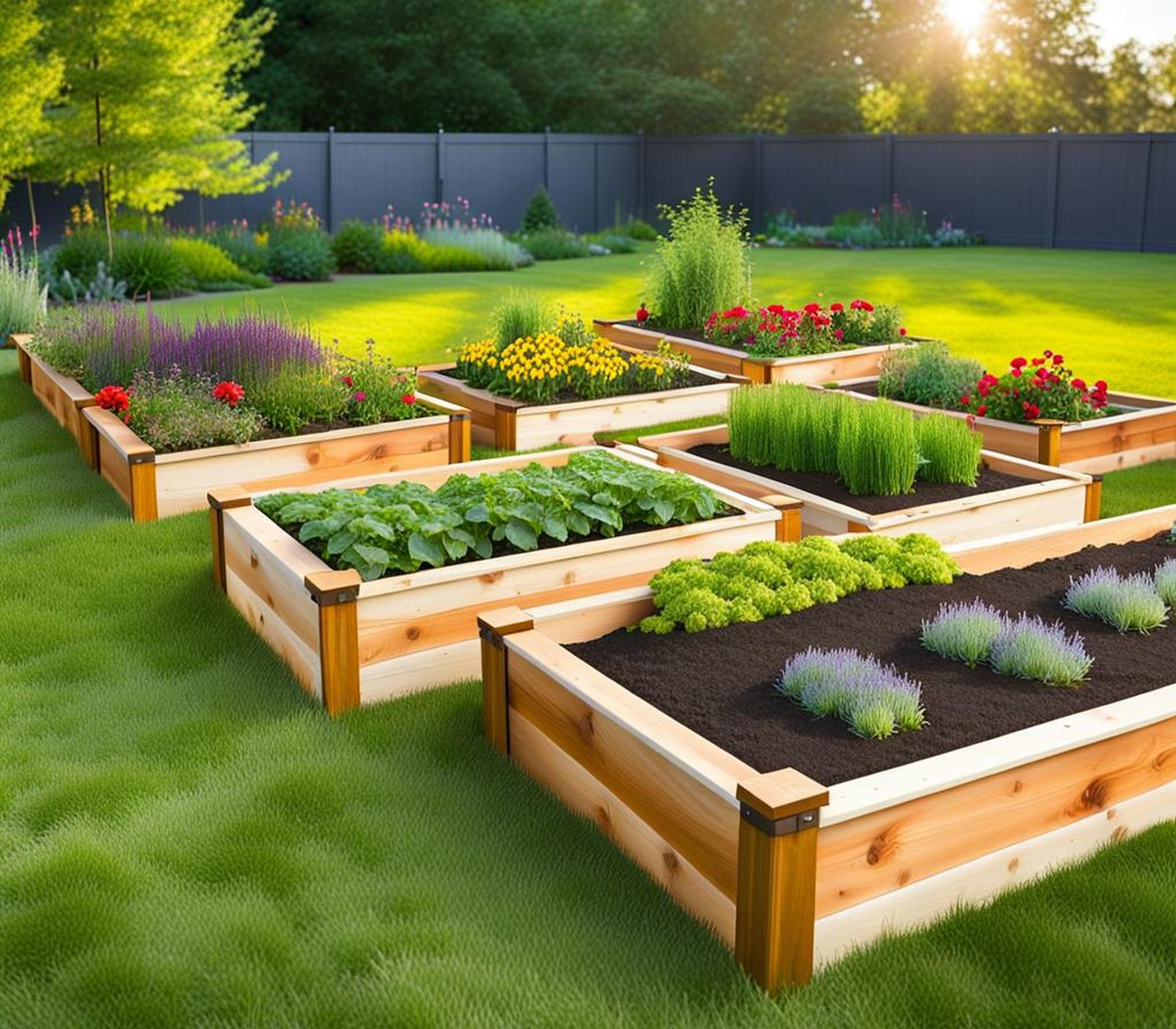For many home gardeners, raised beds offer an easy and rewarding way to grow vegetables, herbs, and flowers. Building your own raised bed is a perfect weekend project that can be customized to fit your space and needs.
Planning Your Raised Beds
Raised beds can be made from wood, plastic, concrete, or even repurposed materials like pallets and shipping crates. Consider the size and layout of your available gardening space. Typical raised beds are 3-4 feet wide and 8-12 feet long. Leave 2-3 feet between beds so you can comfortably tend to plants.
Decide on a shape that fits your space – squares and rectangles are most common. But you can also do circles, triangles, kidney shapes, or creative tiered designs.
Sourcing Materials and Hardware
For wooden raised beds, you’ll need:
- Untreated pine, cedar, or redwood boards. Avoid treated lumber unless you line it.
- Deck screws, corner braces, and drill.
- Landscape fabric, staples, scissors (optional)
Other materials like brick, stone, or plastic may require specific tools and hardware.

Building the Basic Frame
Constructing the raised bed frame is straightforward:
- Cut boards to the desired lengths.
- Pre-drill holes to prevent wood from splitting.
- Assemble into a square or rectangle using corner braces.
- Use deck screws to fasten the boards together.
- Check for square corners and level tops.
Having a helper makes this easier, but one person can do it alone. Just work on a flat surface and clamp pieces if needed.
Lining the Bed
Lining your raised bed with landscape fabric helps suppress weeds. Lay fabric inside the frame, leaving excess to fold over the edges:
- Use scissors to cut fabric to fit inside corners.
- Overlap seams by 6 inches.
- Use staples to secure the fabric in place.
Plastic sheeting or weed barrier can also be used to line and protect beds.
Filling Beds with Rich Soil
Good soil is vital for healthy plants. For raised beds, use:
- 1/3 blended compost or planting mix.
- 1/3 peat moss or coconut coir.
- 1/3 quality topsoil.
Mix well and mound 6 inches above the frame. After watering, soil will settle to the perfect level.
Maximizing Drainage
Excess moisture can cause root rot and other problems. Ensure proper drainage:
- Drill 5-10 drainage holes in the bottom of the frame.
- Add a 2-4 inch gravel base layer before filling with soil.
Planting and Ongoing Care
Most vegetables, herbs, and flowers thrive in raised bed conditions. Amend soil yearly and replenish mulch to retain moisture and nutrients. Weed and water regularly, and monitor for pests. With proper care, your raised bed will last for many bountiful seasons.
Troubleshooting Common Issues
Raised beds are quite resilient, but occasionally problems crop up. Rotting wood is prevented by using landscape fabric and quality lumber. Nutrient deficiencies can be corrected by adding organic compost each spring. Ensure adequate drainage to avoid overly wet soil. Address pests naturally with organic solutions or row covers.
You can build raised beds in a weekend with a bit of planning. When filled with nutrient-rich soil, they make tending a vegetable or flower garden easy and enjoyable for years to come. Be creative with your design, material choice, and plant selections. Soon you’ll be harvesting fresh produce and flowers from your own hand-crafted raised beds.
